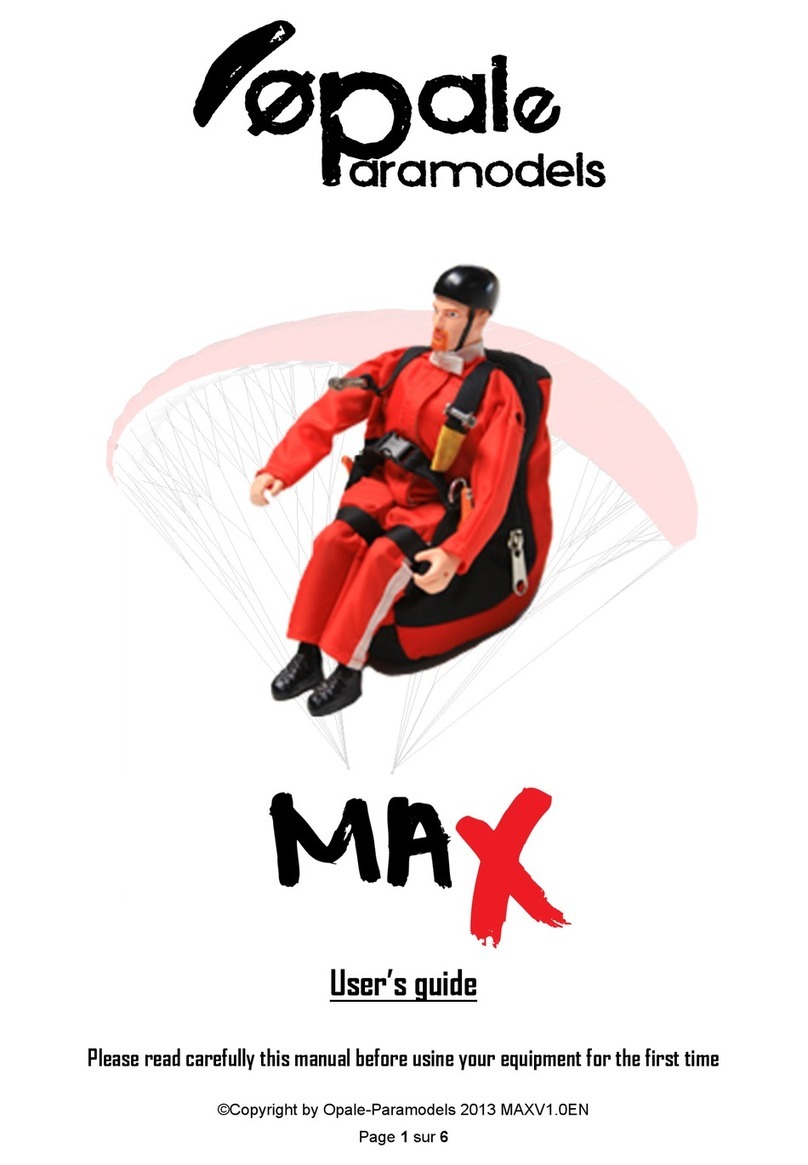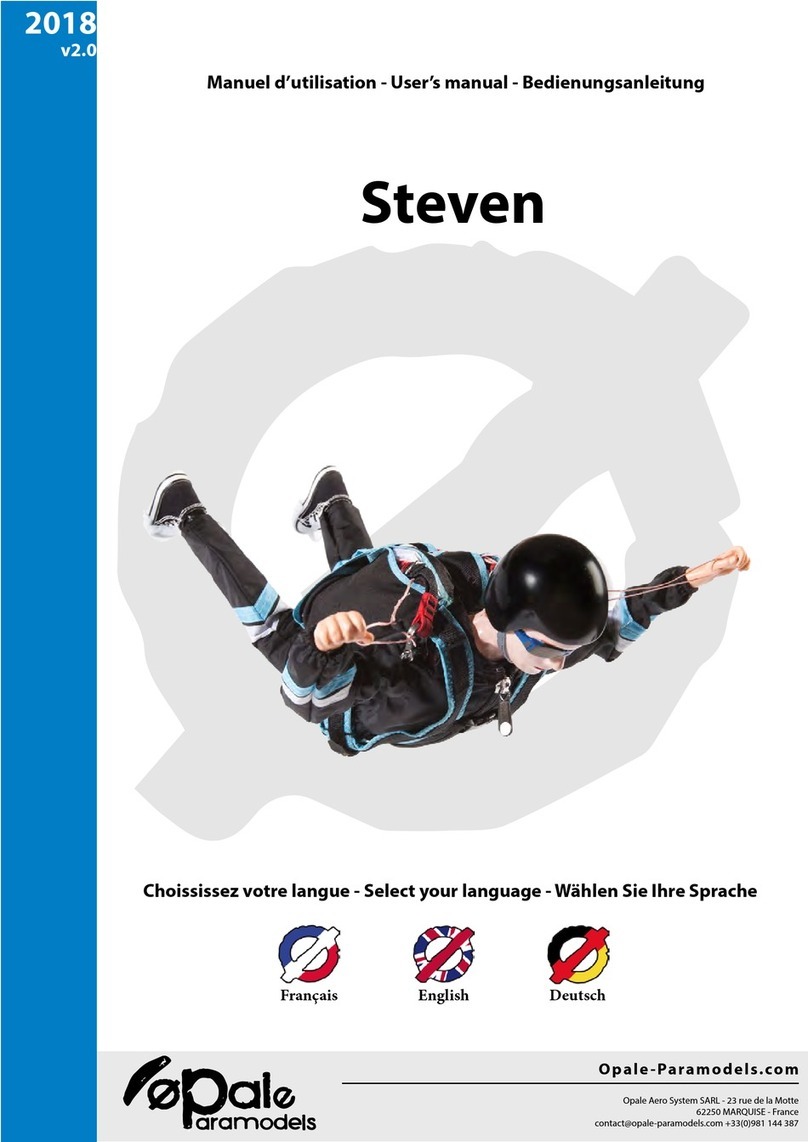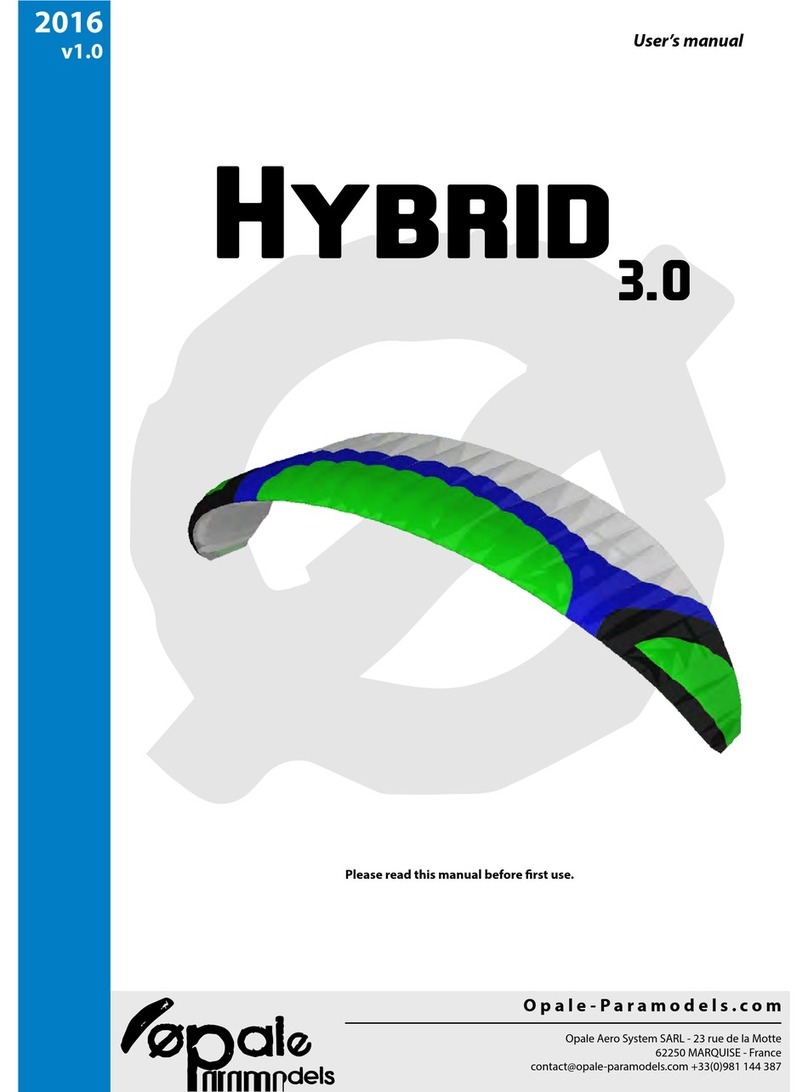!
"#$%&'()*+!,&!-%./012.'.3$40/5!6789!:;!
2.)0!O!5<'!!"!
The illustrating below shows you where you should put the ballast:
Your pilot and its harness are now ready for the wing to be installed.
Third step : Fixing riser on the pilot
Fasten and secure the risers to the pilot as show on the picture above (Red risers to Red strap on the harness)
If you pilot have the speedbar system, Is not to use it with the OXY 1.5.
Once the risers are fastened to the pilot, it is very important that you unleash the brake lines (rear
lines) which are tied to the last ring (the knot is done at the factory plant to prevent any damage due to
transportation, including to avoid the lines to get tangled up). Then, ensure it goes through this ring and can
move freely
Recommended weight for Soaring : 600 gr to 3 kg
3. Getting your Paramotor Kit ready to fly
Trike mounting: please refer to the trike assembling instruction you received when you purchased your
trike.
Radio transmitter settings: exactly the same as described in the “Getting you Soaring kit ready to fly”
section.
Attaching your wing to the trike:
Fastening the risers works exactly in the same way as it has to be done for the soaring kit. The red mark has
to be front-facing. Then please untie the knot which ties the brake line and the ring together and finally make
sure the line goes through the ring freely.
Recommended weight for the paramotor : 1,1 kg to 2,7 kg
































